Build Brand Awareness on Social Media
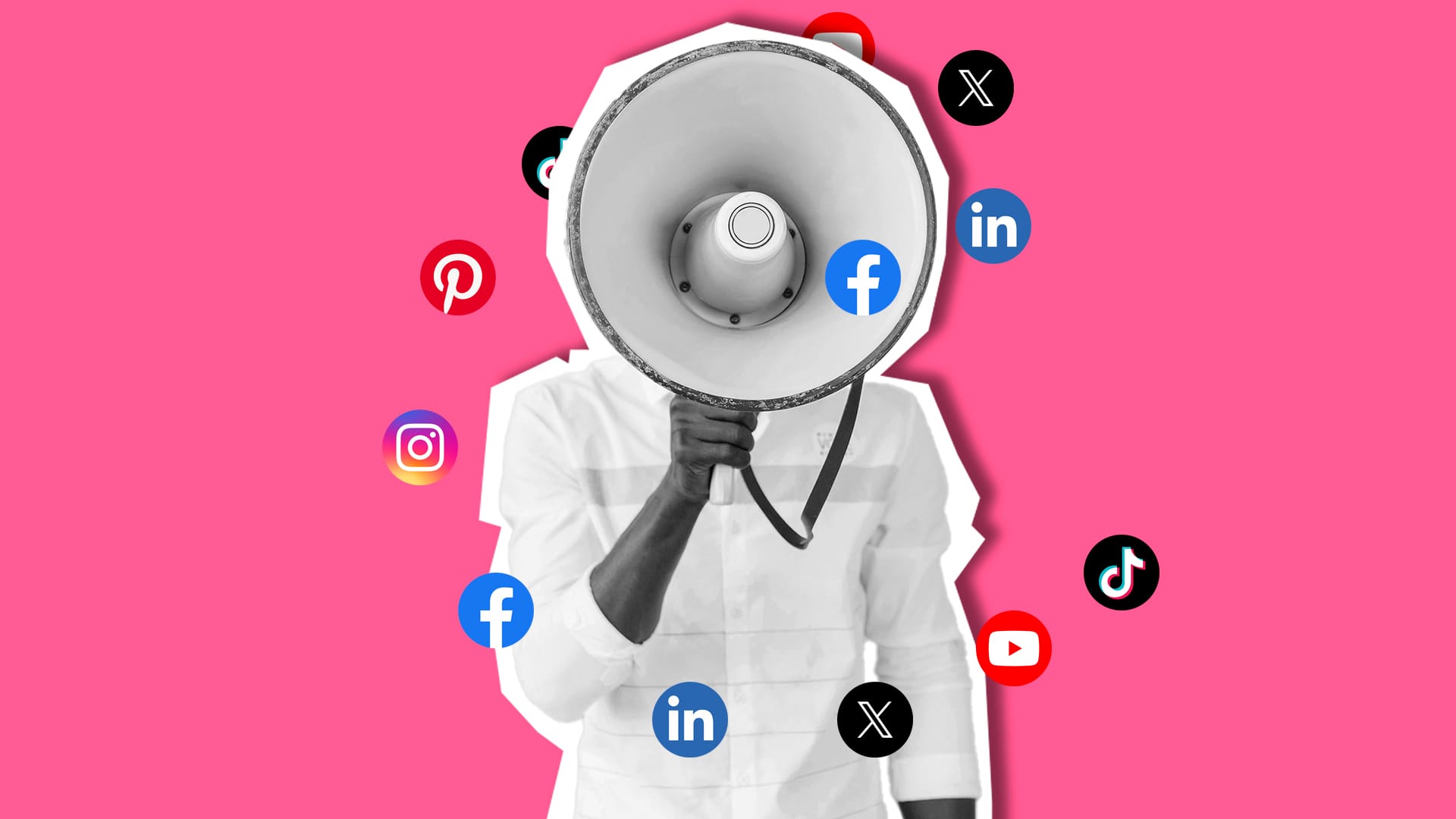
If you want people to remember your brand and choose it over competitors, social media is one of the best places to start. It is where your audience spends time daily, scrolling through posts, videos, and stories. With the right approach, you can make your brand recognizable, trusted, and top of mind.
This guide covers what brand awareness on social media really means, why it matters for growth, and how to build a brand awareness strategy for social media that works.
What is Brand Awareness on Social Media?
Brand awareness is how easily people recognize your business or brand. It reflects the level of familiarity and trust your audience has in you. The stronger your brand awareness, the more likely people are to remember you and choose your products or services when it matters.
Social media is a great place to grow and improve your brand awareness. Platforms like Instagram, TikTok, LinkedIn, and Facebook give you the chance to share your story, show your personality, and connect directly with your audience in an authentic way. Every post, video, or live session helps people understand what your brand stands for and makes it easier for them to recognize.
Why Brand Awareness Matters
Brand awareness is the first step to building lasting relationships with your audience. When people recognize your brand, it creates opportunities for trust, engagement, and growth. Some of the main benefits include:
- Trust and Loyalty: Familiar brands feel more reliable. When your audience remembers and recognizes your name, logo, or products, they are more likely to return and stay loyal over time.
- Word of Mouth: People naturally recommend brands they know. Higher awareness increases the chances that your audience will share your brand with friends, family, or colleagues.
- Standing Out: Awareness helps you differentiate from competitors. Clear recognition makes it easier for users to understand what makes your brand unique.
- Conversions: Customers are more likely to buy from a brand they already know. Recognition reduces hesitation and increases the likelihood of purchase.
- Growth: Strong brand awareness makes it easier to expand your business, launch new products, or enter new markets. The more visible and memorable your brand is, the greater the opportunities for long-term success.
How to Measure Brand Awareness on Social Media
Measuring brand awareness is not just about counting likes or followers. To see if your efforts are truly paying off, look at specific brand awareness metrics on social media:
- Reach: The number of unique users who see your content.
- Impressions: How often your posts are displayed, including repeat views.
- Engagement: likes, shares, comments, and clicks that show how people interact.
- Audience Growth: How your follower count increases over time.
- Branded Searches: The volume of searches for your brand name or products.
- Mentions and Sentiment: how often people talk about your brand and whether the tone is positive.
Tracking these numbers gives you a clear picture of how visible your brand is and whether your campaigns are working.
How to Boost Brand Awareness on Social Media
Building brand awareness on social media involves developing a recognizable presence that reflects your brand’s identity and values. Here’s how to approach it:
Build a Recognizable Brand
✅ Define Brand Voice, Design, and Personality: Your brand voice should reflect your company’s values and personality. A consistent tone, along with logos, color palettes, and typography, will make your brand memorable. This identity should align with your audience to create a natural connection.
✅ Optimize Social Media Profiles: Use consistent handles, profile images, and bios across platforms to make your brand easy to find. Include keywords related to your industry to appear in searches. An optimized profile supports a strong brand awareness strategy for social media.
✅ Communicate Brand Values & Value Proposition: Be clear about what your brand stands for and what makes it unique. Highlighting your values and unique advantages helps customers understand why they should follow and trust you.
Create Valuable Social Media Content
✅ Share Content that Educates, Entertains, or Engages: Go beyond product promotion. Share how-tos, tips, stories, or behind-the-scenes content to spark emotional connections.
✅ Tailor Content to Each Platform: LinkedIn works best for professional insights, while Instagram favors visual storytelling. Adapting your content ensures it matches both the platform and the audience.
✅ Incorporate User-Generated and Repurposed Content: UGC, such as testimonials or photos, builds credibility. Repurposed content from trusted sources also positions your brand as an authority.
Launch Brand Awareness Campaigns
✅ Design Targeted Campaigns: Run promotions, contests, or limited-time offers to generate buzz. Campaigns designed around social media marketing brand awareness can significantly grow your reach.
✅ Use Paid Advertising: Invest in ads to expand your visibility. With precise targeting, you can reach your ideal audience and introduce your brand to new customers. Paid ads are particularly effective for growing awareness of new products or services.
Engage with Your Audience
✅ Respond to Comments, Messages, and Mentions: Building awareness is not just about visibility but also relationships. Engaging directly with your audience shows you value their input.
✅ Incorporate Interactive Content: Use polls, Q&As, or contests to involve your community. Featuring user stories or reposting their content deepens engagement and builds recognition.
Collaborate with Other Brands and Influencers
✅ Partner with Complementary Brands or Influencers: Collaborations can introduce your brand to entirely new audiences. Choose partners whose values align with yours for authentic results.
✅ Select the Right Influencers: Whether you team up with a nano-influencer for niche reach or a macro-influencer for wide visibility, the fit matters. Influencers who truly connect with your brand drive more genuine awareness.
Be Consistent
✅ Post Regularly and Maintain Cohesive Messaging: Consistency keeps your brand top of mind. Regular posts and unified messaging across platforms strengthen recognition and trust.
Platform-Specific Brand Awareness Strategies
Growing brand awareness on social media works best when you adapt your approach to each platform. Every channel has its own audience, style of content, and ways people interact. By playing to those strengths, you can connect with users in ways that feel natural.
1. Facebook: Create a Community with Engaging Content and Interaction
Facebook remains one of the best platforms for building a sense of community. With its broad and diverse user base, it gives brands the flexibility to share different types of content and connect with audiences on a deeper level.
Live videos and virtual events are especially effective for sparking real-time interaction. Hosting Q&A sessions, product launches, or behind-the-scenes tours helps you connect in a personal way. Facebook groups are another valuable tool, offering a space for your community to gather around shared interests related to your brand or industry.
You can also make use of Facebook’s varied formats, such as polls, carousels, and stories, to spark conversations and collect feedback. These features not only encourage interaction but also provide insights into your audience’s preferences and interests.
2. Instagram: Leverage Visual Storytelling and Influencer Partnerships
Instagram is all about visuals, making it the go-to platform for brands that want to showcase personality and style. A consistent look through colors, filters, and design helps create an identity that feels instantly recognizable.
Reels are a strong way to increase reach, offering quick tutorials, creative storytelling, or behind-the-scenes clips that grab attention in seconds. Stories are another important tool, allowing you to share updates, run polls, or feature customer testimonials in a format that feels casual and approachable.
Partnering with influencers who reflect your brand’s values is a natural way to grow awareness. Because their followers already trust them, influencer partnerships can make your brand feel more relatable and authentic while expanding your reach to new audiences.
3. X (Formerly Twitter): Engage in Real-Time Conversations
It’s where people go for quick updates, trending topics, and conversations that move fast. For brands, it’s an opportunity to be part of cultural moments and industry discussions as they unfold.
Jumping into hashtags, replying to trending topics, or sharing quick takes on industry news can increase visibility and show that your brand has a voice in the conversation. Short, sharp posts work best here, delivering value or personality in just a few words.
X is also a space where brands can let their personality shine. Whether through wit, humor, or thought-provoking comments, showing a human side can make your brand more approachable and memorable.
4. LinkedIn: Build Thought Leadership and Industry Credibility
LinkedIn is where professionals go to learn, connect, and grow. That makes it the best platform for brands that want to establish thought leadership and build credibility in their industry.
Sharing articles, research, and case studies positions your brand as a knowledgeable source. Regularly posting insights or contributing to group discussions can spark meaningful conversations with professionals who are already interested in your field.
LinkedIn groups are especially useful for targeting specific audiences. By engaging in niche communities, you can showcase your expertise and expand your reach in ways that feel authentic and relevant.
5. TikTok: Tap into the Platform’s Viral Nature with Short, Engaging Content
TikTok thrives on short, creative content that feels fun and authentic. It’s especially popular with younger audiences who value brands that don’t take themselves too seriously.
Quick tutorials, product demos, and storytelling clips are great ways to capture attention in the fast-scrolling feed. Joining trending challenges, sounds, or hashtags is another way to stay visible while blending in with the platform’s culture.
TikTok is also an ideal space for collaborations with creators. Working with influencers or niche TikTokers allows you to tap into engaged audiences while sharing content that feels genuine and approachable.
6. Pinterest: Inspire and Educate with Curated, Visual Content
Pinterest works like a visual search engine, which makes it one of the strongest platforms for discovery. It’s especially valuable for lifestyle, fashion, food, and home décor brands that can spark inspiration with curated imagery.
Instead of relying only on plain product shots, show your items in real-life settings. For example, a furniture brand might share styled living rooms or cozy reading nooks that help users picture how the pieces would look in their own space.
Think beyond your own catalog when creating boards. Mix your products with complementary visuals, colors, or trends that reflect your brand’s aesthetic. For instance, a kitchenware brand might create a “Holiday Hosting” board that blends its dishes with recipes, décor ideas, and table styling inspiration. This approach helps your boards feel like a resource, not just a catalog.
Since users often turn to Pinterest for ideas and planning, using descriptive titles, captions, and keywords boosts your visibility in search. Organizing boards around themes such as “Beach Wedding Inspiration” or “Pink Home Office Ideas” also makes it easier for people to find what they’re looking for while discovering how your brand fits into their lifestyle.
Social Media Brand Awareness in Action
Some of the most effective brand awareness strategies in 2025 come from brands that combine authenticity, creativity, and engagement. Lush, Nike, Duolingo, Wendy’s, and Apple provide strong examples of how distinct voices and storytelling make a brand memorable across social platforms.
Duolingo
Duolingo brings humor and personality to social media through its mascot, Duo. They create viral TikTok and Instagram Reels featuring Duo in playful or trending scenarios and interact with followers through witty comments and pop culture references. Their approach makes content highly shareable while reinforcing a fun, approachable identity.
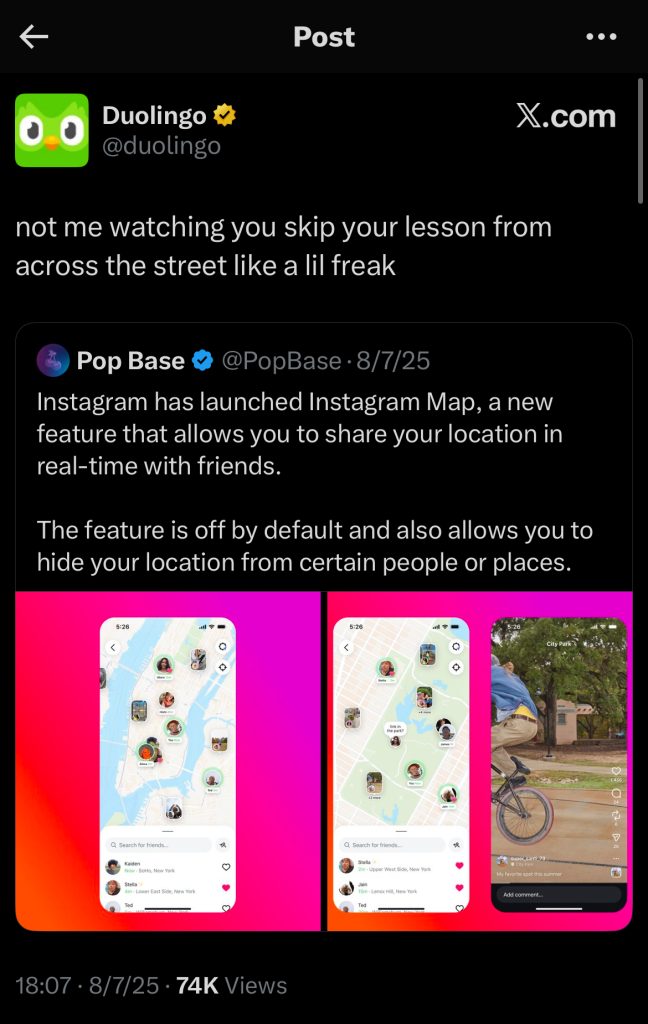
Their unique brand voice and personality is what helps them achieve memorable reach and a strong following, especially among younger audiences.
Nike
Nike combines inspirational storytelling, striking visuals, and athlete partnerships to create a memorable social media presence. The hashtag #justdoit has become iconic, driving viral campaigns that highlight perseverance and achievement. By tying content to social causes and blending emotion, inclusivity, and athletic excellence, they keep audiences engaged and maintain relevance across multiple platforms.
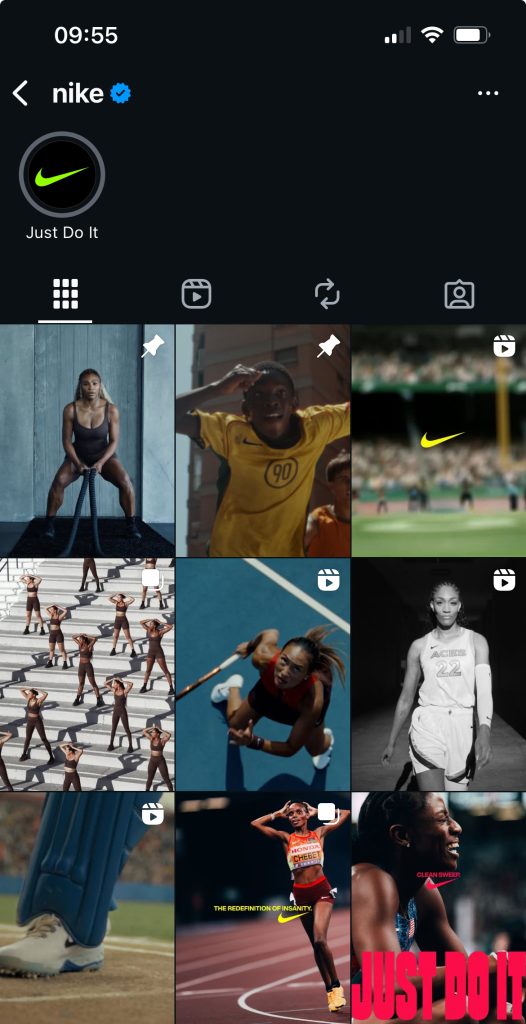
Wendy’s
Wendy’s is known for having a snarky, witty brand voice, particularly on X/Twitter. They spark engagement by responding to competitors and followers with clever, timely quips, including campaigns like National Roast Day.
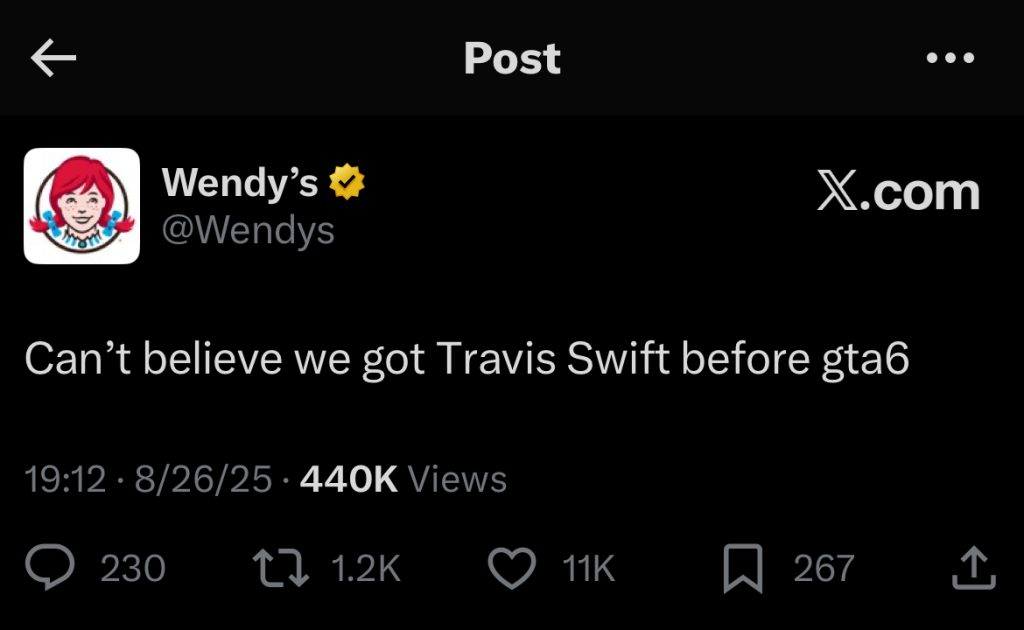
Humor and authenticity are central to Wendy’s strategy, which is how they stand apart from other fast food brands. This bold personality turns everyday interactions into viral moments, generating conversation and press coverage while keeping the brand highly visible.
Apple
Apple emphasizes user creativity through campaigns like #ShotOniPhone, where users share authentic photos that highlight the iPhone’s capabilities. They curate this content to tell visually striking stories while maintaining minimalistic, emotionally resonant branding.
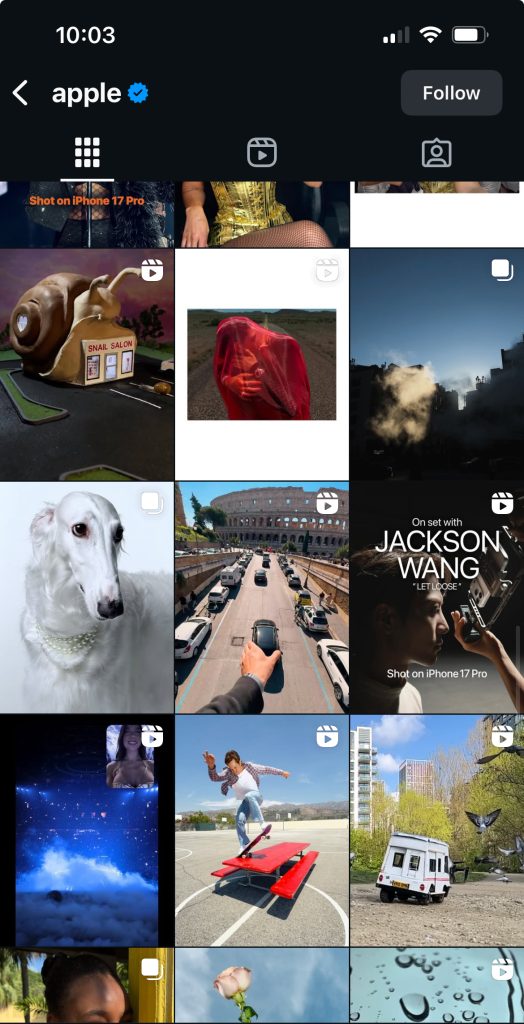
Apple’s ability to engage with global communities and respond to cultural moments, is how they remain aspirational, widely recognized, and highly trusted on social media.
What These Brands Teach Us
Despite their different strategies, all of these brands show the same lesson: social media brand awareness thrives when content connects on a human level. Posts that inspire, entertain, or spark curiosity invite engagement and sharing. By creating experiences that feel genuine and memorable, brands build trust, strengthen relationships, and stay visible in fast-moving feeds.
Tools to Measure Brand Awareness on Social Media and Beyond
Measuring brand awareness isn’t about one single number. It’s about piecing together different data points, including reach, engagement, search visibility, and conversations happening around your brand. The right mix of tools gives you a clear picture of how visible your brand is, how people interact with your content, and whether awareness is turning into meaningful connections.
Metricool
Metricool is an all-in-one platform for managing and analyzing your social media presence across Facebook, Instagram, LinkedIn, TikTok, and more. It pulls together everything you need to track performance while also helping you plan and publish content.
- Reach and Engagement Tracking: See how far your posts travel and how people respond, making it easier to identify the formats and topics that capture attention.
- Scheduling with Insights: Plan and schedule posts and follow up with detailed analytics like follower growth, impressions, and engagement trends over time.
- Competitor Analysis: Benchmark your performance against competitors to see where you stand in your industry and spot opportunities to refine your strategy.
- Custom Reports: Build and share reports automatically with your team, clients, or stakeholders to keep everyone aligned.
Metricool combines analytics, scheduling, and competitor tracking, making it a powerful tool for measuring how your content contributes to brand awareness across multiple channels in one dashboard.
Google Analytics
Google Analytics gives you a deeper look into what happens once someone discovers your brand and lands on your website. It helps you connect the dots between awareness campaigns and user behavior.
- Audience Demographics and Behavior: Understand where your visitors are coming from, what pages they spend the most time on, and how they move through your site.
- Traffic Source Tracking: See how much traffic comes from social media, search engines, referrals, or direct visits. This breakdown shows the role social media plays in driving awareness.
- Conversion Goals and Events: Track actions like newsletter sign-ups, purchases, or downloads. These goals help you measure whether brand awareness is leading to meaningful outcomes.
Google Analytics goes beyond visibility and engagement to show how brand awareness translates into website visits, interactions, and conversions.
Meta Business Suite (for Facebook and Instagram Analytics)
Meta Business Suite pulls your Facebook and Instagram analytics into one place, making it easier to understand how your content performs across both platforms.
- Audience Insights: Learn more about who is engaging with your posts, including age, location, and interests, so you can tailor content to match your core audience.
- Engagement and Interaction Metrics: Track likes, shares, comments, and direct messages to see which types of posts spark the most conversations.
- Ad Performance Tracking: If you are running brand awareness ads, dive into metrics like reach, impressions, and cost per result to evaluate and refine campaigns.
For brands focused on Facebook and Instagram, Meta Business Suite is especially useful. It ties together organic and paid content performance, giving you a complete picture of how awareness efforts are paying off.
Ahrefs
Ahrefs is best known for SEO, but it is also an excellent tool for measuring brand awareness across search engines and the broader web.
- Branded Search Volume: Track how often people search for your brand name or related terms, which can show whether awareness campaigns are driving curiosity.
- Backlink Analysis: Monitor who is linking to your website and where those links come from. A growing backlink profile often signals greater visibility and authority.
- Mentions and Social Listening: Keep an eye on when and where your brand is mentioned across blogs, forums, and media outlets. This helps you understand how conversations about your brand are spreading.
With its mix of SEO and brand monitoring features, Ahrefs provides a wider view of your digital presence, showing how brand awareness translates into search demand, authority, and online discussion.
Grow Your Brand Awareness on Social Media
Create, schedule, analyze, and optimize your social media with Metricool. Get data-driven insights to improve your brand awareness strategy.

